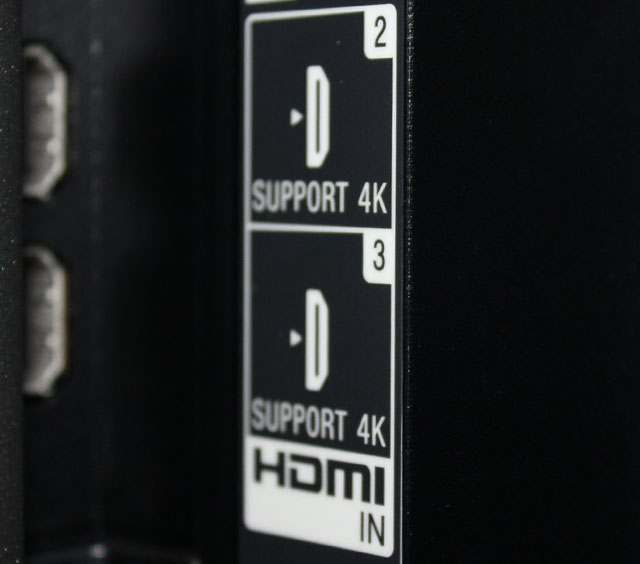This article is more than 1 year old
4K-ing hell! Will your shiny new Ultra HD TV actually display HD telly?
Even if it can find content to display, there's no guarantee it'll decode correctly
Airwaves
Broadcast opens up a whole load of other problems, and for many early adopters, the experience with HD was not a happy one, with HD Ready sets lacking the necessary tuners, and even HD TV-labelled kit not necessarily working in the UK.
We could be set for the same dilemmas again. Broadcasters may use H.264 or H.265 - none of them are sure yet. There is, I believe, a chance there may be trials of UHD over terrestrial channels in the UK, just as there were with HD, but it doesn’t necessarily follow that any final service would use the same parameters – remember that the first HD tests on Freeview used DVB-T instead of DVB-T2.
Much may depend on the progress in development of broadcast encoders for H.265. And even if a service were to be launched using H.264, you’d still need the decoder chips in your set to handle the correct profile - H.264 High Profile Level 5.2, since you're asking.
Some readers may be thinking at this point, “Isn’t 4k going to need much more bandwidth than HD?” A 2012 paper presented at the International Broadcasting Conference (IBC), “4K Delivery to the Home”, reckons it needs to shift around eight times as much data for 4K 50Hz progressive scan as for 1080i. At those rates, for the best quality, an existing digital mux or satellite transponder wouldn’t even manage a single channel.
However, all those extra pixels give space to play with, especially when they’re so small you may not even see them. It could be possible to fit two UHD channels in a 45Mbps mux or transponder stream - and that’s using H.264 compression; H.265 is anticipated to do better still - the paper’s author, Pierre Larbier, CTO of French video compression technology firm Ateme, suggested 13Mbps may be sufficient for a 4K broadcast. A live test transmission set up specially for CES by US broadcaster Sinclair used 27Mbps over DVB-T2 to deliver 4K images to the Samsung stand, using the H.265 codec.
Finding space in the spectrum
Of course, with Ofcom keen to squeeze terrestrial TV into ever smaller chunks of spectrum – a cynic might think the addition of extra HD channels are a ruse to persuade more people to buy T2 receivers, ahead of a complete change to that standard – is there any point in even thinking about UHD over the airwaves? Shouldn’t it be left to satellite, cable or IP distribution, for those who want to pay extra for better quality?
On the other hand, what better way to argue for retaining the spectrum than by using it for something that could bring the best quality to far more people, sooner and more efficiently than other delivery methods?

If you think you’ve got a handle on what you need to know before investing in a 4K set, there’s more. Remember that 4K isn’t just about resolution: there’s frame rate too. HDMI 1.4 connectors can support 4K - but only up to 30Hz, which is half what’s proposed by “4K Delivery to the Home”. To manage more than that - and some people think 4K offers opportunities for even higher frame rates - you need HDMI 2.0.
Some of the 4K sets that have shipped already have HDMI 1.4, though Sony for one is promising upgrades. Whether it will deliver is another matter. The HDMI Association says the change “would require hardware and/or firmware upgrades”.
Plugging it in
This month Australian retailer Kogan announced what it claims is the world’s “best value” Ultra HD set, at AU$999 / £550, for a 55-inch set - but despite being a new launch, it too only has HDMI 1.4. Remember too that if you want to run things through an AV receiver, then that’s going to need HDMI 2.0 as well.
Frame rate isn’t all that might improve with Ultra HD, either. 4K offers the chance for increasing colour depth, up from 8 bits per pixel per colour component to ten or 12. In practical terms, that means more accurate rendition of colour, and the depth is one of the decisions that the BDA and others are facing in coming up with their standards or recommendations. If they do opt for increased depth, then September’s “baseline capabilities” from Digital Europe will look a little disappointing.
In short, if you’re thinking of buying 4K right now, be careful. Or, better still, wait. If you think you’d like to take advantage of any terrestrial broadcasts down the line, then you should hang on. Not only will the sets be cheaper, they’ll be more likely to come with both H.264 and H.265 decoders, giving you a better chance of being able to tune in to something.
If you plan to rely on an external source, then make sure that whatever you buy has HDMI 2.0, because if it doesn’t, you’re going to miss out on a lot of content.
And if you’re smart? Wait and see... ®
